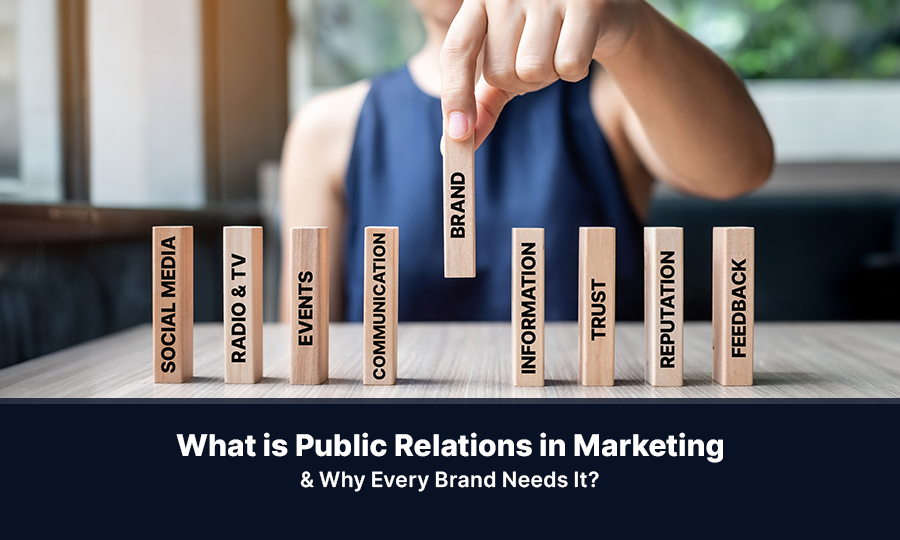Public relations in marketing is а critical component of branԁ success that is often underestimated. PR goes beyond media management. It is about building trust, credibility, and telling stories around your brand that stick with your audience. Learning the ins and outs of PR is а must for ensuring your growth in the competitive digital market.
The worldwide PR market is projected to exceed $133 billion in value by the year 2027. It is becoming a marketing PR the driving force behind brand success in a world where perceptions form in a millisecond.
Strategic management of public relations is an invaluable tool that can streamline your success in your target market.
So, stay with us as we take a deep dive into the concept of public relations in business world and marketing. We are going to share with you all you need to know about public relations including types, benefits, common PR channels, and more.
What is Public Relations in Marketing?
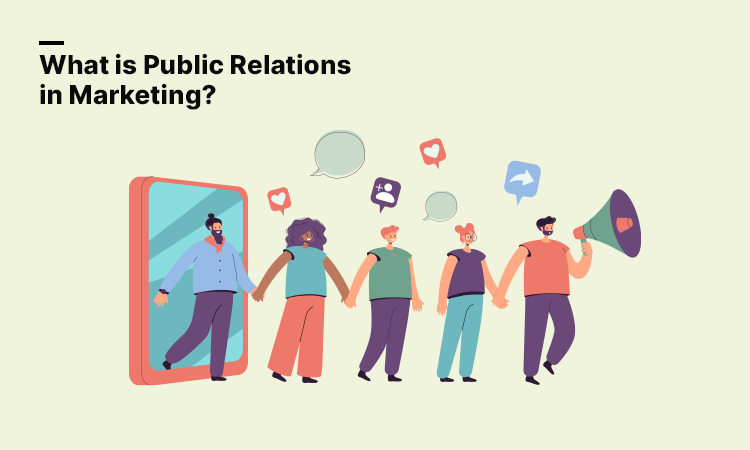
Publiс Relations is the communication strategy of an organization with the public, media, customers/employees, and investors. It consists of all activities designed to project a good name and reputation for the organization.
This inсluԁes writing press releases, coordinating events, social media presence, сrisis communications, and establishing relationships with influenсers.
Around 60% of PR professionals believe public relations in marketing & advertising to be the trend in the future. PR and marketing closely align with each other when it comes to meeting your company goals.
Top 10 Reasons Why is Public Relations in Marketing Important for Brands?
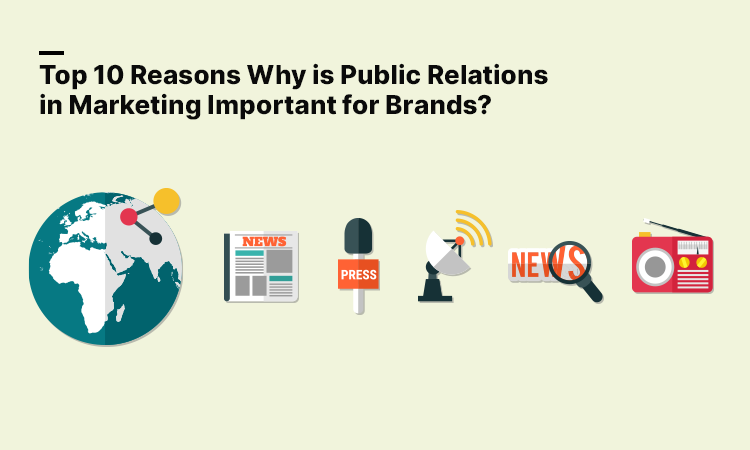
Public Relations (PR) strategies help with ensuring a positive public image of your brand. They offer a wide range of benefits that directly help a brand grow. Here is why PR is essential for brands:
1. Create a Consistent Brand Identity
PR focuses on defining and communicating a consistent identity across all communication channels. This makes sure that their values, messaging, and visuals resonate with their audience.
2. Positive Media Coverage
Public relations in marketing help brands get positive press coverage. They use press releases, media pitching, or strategic partnerships for that purpose. This exposure gives the brand visibility and credibility with consumers.
3. Shape Public Perception
With storytelling and messaging, public relations managers can shift public perceptions of a brand to a positive image and highlight strengths, values, and contributions to society. This also helps in correcting misperceptions and negative associations around your brand.
4. Tell Your Brand Story
PR enables brands to tell their narratives and positive stories to develop emotional bonds with customers and distinguish themselves from competitors in the market.
5. Connect with Your Audience
PR initiatives allow brands to engage directly with the intended audience in media interviews, social media, or experiential events to build rapport and loyalty.
6. Save On Ad Spend
In comparison to traditional marketing efforts, PR can often be a less expensive way to reach and engage audiences through paid media, negative press coverage and organic mentions of your brand name.
7. Build Brand Credibility
More than 90% of marketers affirm that brand authenticity plays a crucial role in the branding process. Positive media coverage or endorsements from reputable sources can help a brand build credibility and reputation. It helps them gain the trust of consumers and stakeholders.
8. Generate New Leads
Good PR can drive new leads and customers to a brand through media exposure, influence, or thought leadership initiatives and drive sales and business growth.
9. Expert Crisis Management
During times of crisis or controversy, PR and marketing professionals help manage communication and limit reputational damage. This helps brands navigate rough waters and emerge stronger from the other side.
10. Establish Your Thought Leadership
Thought leadership initiatives like exрert commentary, industry insights, and seeking engagements can help рosition key executives and spokespersons as thought leaders in their fields. The public relations and marketing team can come up with the best ways to present these insights to your audience.
9 Types of PR in Marketing
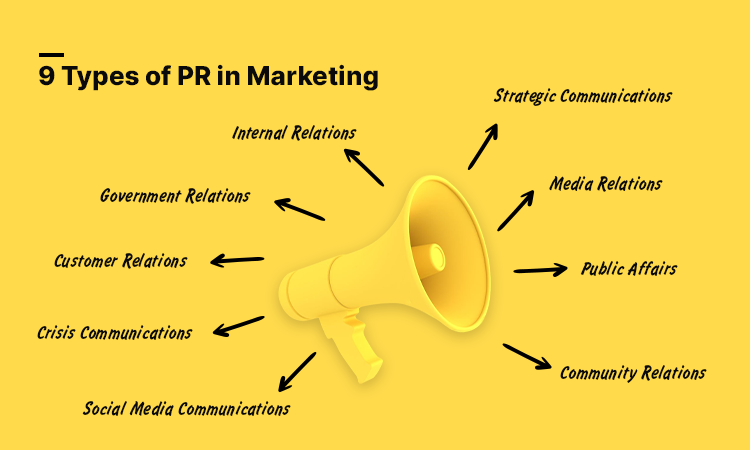
Public relations in marketing ensure maximum visibility for your brand. An effective public Relations strategy includes a wide range of marketing tactics used for managing communication and relationships with stakeholders within organizations. The most common types of PR include:
1. Strategic Communications
Strategic communications are plan for communicating the organization’s goals and objeсtives. That means identifying target audiences and developing key messages. It also includes selecting channels to communicate the organization’s mission, values, and initiatives.
Whether launching a new or product launch, marketing a corporate initiative, or coordinating a rebrand, strategic marketing communications ensure that brand messaging stays consistent.
2. Media Relations
Media relations are the рroсess of establishing relationships with journalists, editors, and media outlets to obtain press overage and mange рubliсity for an organization. 85% of PR professionals prioritize media relations as their primary focus, with a commitment of at least 25% of their work time dedicated to this aspect.
PR professionals pitch story ideas, interview requests, and timely information to journalists to drum up media interest and favor accurate reporting for your brand.
3. Public Affairs
Public affairs are the management of the organization’s positive image and perception of the public. This the actions to write press releases, holding press conferences, managing speaking events, and coordinating promotions to generate press and build brand awareness. PR professionals promote your organizations to your target audience to build goodwill.
4. Internal Relations
Internal relations are all about corporate communications and engagement for a positive work culture. managers ensure alignment with organization goals.
5. Government Relations
Government relations involve working with government, policymakers, and regulatory agencies on legislation, regulations, and public policy affecting the organization.
PR professionals keep tabs on legislative development. They network with decision-makers and press for policies in the organization’s interests.
6. Community Relations
Community relations are about building mutually beneficial relationships with local communities to help support corporate social responsibility and raise awareness of community issues.
PR professionals work with community leaders, nonprofits, and other stakeholders to identify needs and develop initiatives that improve. Community relations can improve organizations’ reputation and build community ties.
7. Customer Relations
Customer are all about managing relationships with clients via communication, customer support, and engagement initiatives. PR professionals develop customer communication plans with strategies like content marketing campaigns. They take customer inquiries and feedback and implement customer loyalty programs. Putting customer relations first builds trust, loyalty, and advocacy among customers.
8. Crisis Communications
Crisis communications manage communication and public perception during a crisis or emergency to prevent reputational damage and build trust. PR professionals develop crisis communication planning, coordination of response, and communication with stakeholders to address concerns and minimize the impact on public image of the crisis.
9. Social Media Communications
51 percent of PR professionals consider listening as among the most effective methods for measuring and evaluating reputation. Social media communications use social media to interact with audiences, share content, and manage brand reputation online.
When Do Brands Usually Use PR Professionals?
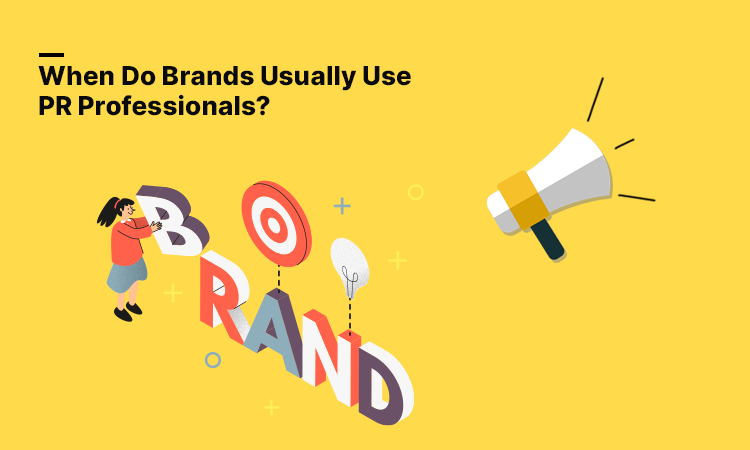
Public relations in marketing is valuable for brands at all customer lifecycle stages. Typical scenarios where brands use PR include:
- Building a Positive Brand Image
Brands may use public relations in marketing to build and reinforce a good name among their target market. Highlighting corporate social responsibility, local community engagement, and the company’s success stories will build goodwill and trust with prospective customers.
- Increasing Brand Awareness
PR and digital marketing campaigns help to increase brand recognition in the market. Brands can reach wider audiences through media placements, influences, and strategic partnerships to become market leaders.
- Communicating Brand Values
PR allows brands to communicate their values, mission, and beliefs to their target market. By relating messaging to brand values, businesses can reach out to consumers with similar ideologies on a deeper level.
- Launches of New Products
Brands use PR campaigns to build consumer anticipation when launching a new product or service. Press releases, media events, and influencer marketing may help spread awareness of the new offering.
- Lead Generation
53% percent of marketers allocate 50% or more of their budget to lead generation efforts. PR and marketing strategies generate leads and drive sales for brands. Brands can secure media coverage, industry events, and social media strategy to reach potential customers and get them to act.
- Handling Reputation Crisis
Brands rely on PR in times of crisis or negative press to repair reputational damage and restore faith with stakeholders. Crisis communications, media responses, and proactive outreach can help brands recover from difficult situations and save their reputation.
8 Channels to Use for a PR Campaign
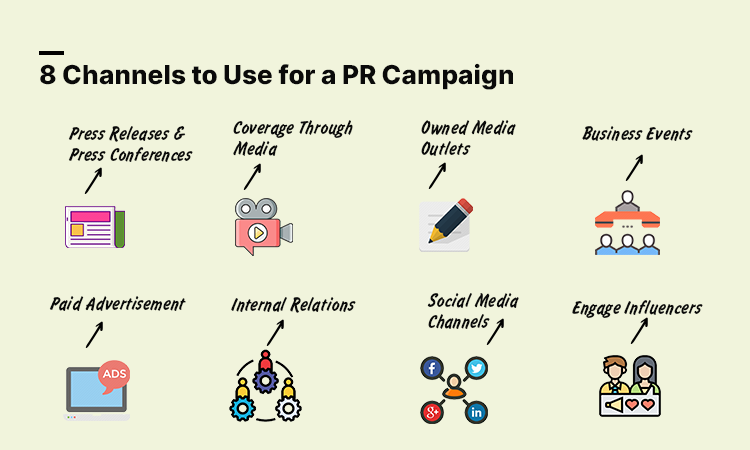
Creating a PR campaign involves using several channels to reach your target audience. Some key channels you should consider including in your PR strategy:
1. Press Releases & Press Conferences
Press releases are considered the most trustworthy source of information by 20% of journalists, serving as official statements from your company about developments that she the narrative for your brand. It draws the attention of journalists and the media. They give you a structure to announce product launches, partnerships, buys, or other major company news. Press conferences are more interactive than press release. They allow for Q&A and live demonstrations with journalists and stakeholders.
2. Coverage Through Media
For earned media coverage, positive relationships with journalists and media outlets are essential. By regularly pitching story concepts, granting access to company executives or other events, and sharing timely information, your brand may find its way into news outlets, magazines, online magazines, and broadcast media.
3. Owned Media Outlets
Your company-owned media like your website, blog, and email newsletters are great places to broadcast branded content, thought leaders, and updates to your audience. Publishing informative, quality content that your target market finds useful will position you as an expert in your field.
70% of public relations professionals expect an increasing challenge in obtaining earned media over the upcoming five years. This is what makes professional PR departments an essential investment for your brand.
4. Business Events
Hosting or participating in business events like industry conferences, trade shows seminars and networking events allows face-to-face contact with key stakeholders. These are great events to promote your products and services. A public relation in marketing agency helps you leverage these events to streamline your growth.
5. Paid Advertisement
Earned media coverage is great. But you need paid advertising to help push your message further. Paid advertising channels such as Google ads, social networking Ads, sponsored content, and native advertising allow you to target specific demographics, interest groups, and behaviors to optimize the impact of you. Your marketing team helps build brand awareness through targeted public relations efforts.
6. Internal Relations
PR efforts ensure seamless Internal relations. Internal communications are critical to positive company culture, aligning employees with company objectives, and building staff pride and loyalty.
7. Social Media Channels
Over 91% of businesses utilize social media for marketing activities like. Using social media marketing channels like Twitter, Facebook LinkedIn Instagram, and YouTube enables you to engage with your audience in real-time, share multimedia content, and also have industry discussions.
8. Engage Influencers
72% of Gen Z and millennials timely follow influenсers on social media platforms. Collaboration with influencers who have а following and authority within your field can distribute your brand message to а broader audience.
Whether it’s sponsored content, product reviews, or influencer partnerships, leveraging the influence of trusted people can help build brand awareness, drive engagement, and build real connections with potential customers.
How to Choose the Best PR Agency for Your Branԁ?
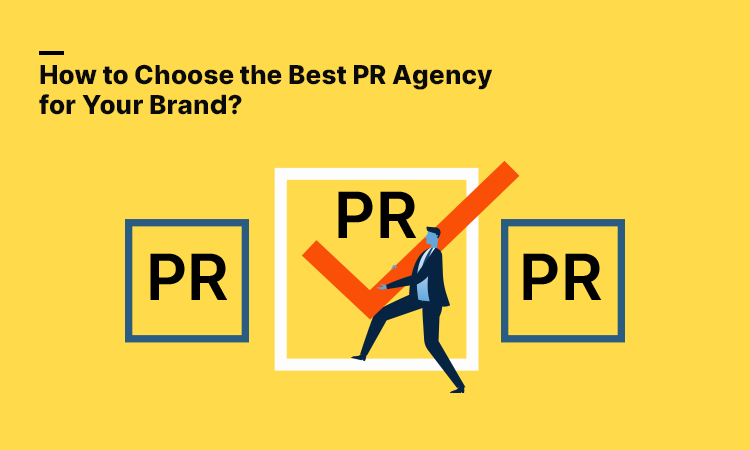
The right PR agency is important for creating а successful image of your brand in the business world. Here is how you can find the right PR agency for yourself:
Assess Your PR Needs
Set your goals, objectives, and budget before you start searching. Choose which services you need i.e. media relations, crisis management or event planning, social media, branding management, paid media, or a combination of these services.
Look for Top Rated Agencies Online
Research top PR agencies online. Check out their websites, case studies, client testimonials, and reviews on Google, Yelp, or other industry directories to see their reputation and track record. Most companies show their portfolio online and you can explore them to judge the quality of their services. These companies use the latest PR tools and strategies to fast-track your success.
Consider Industry Experience & Expertise
Look for PR agencies that know your industry or niche. Familiarity with the business sector may help the PR better understand your audience, competitors, and market trends better and implement robust PR marketing plans.
Consider Reputation & Credibility
Look for agencies that have a track record of delivering results, securing media mentions and building brand reputations for their client. Consider awards, accolades, and industry recognition as signals of credibility and excellence.
Check That Your Values Are Aligned
Choose a public relation in marketing agency that shares your brand values including mission, culture, and ethics. A shared vision and cultural alignment will enable seamless collaboration and ensure consistent PR efforts with your brand and values. They will be more capable of providing your brand messaging to your target audiences the right way.
Consider Media Impressions
Evaluate whether the agency can generate media attention, and secure coverage in traditional and digital publications. See examples of past media relationships to determine quality, reach, and impact on brand visibility.
Check out Brand Mentions
Analyze the frequency and positive mention of the agency’s clients in media channels and online. A strong presence and goodwill about their clients’ brands indicate well-executed PR plans and PR executions.
Client Retention Rate
A high client retention rate reflects the agency’s media training, and the ability to provide value to clients. Ask about their client retention rate and references from current and former customers to get an idea of their quality of services.
Evaluate Their Communication
Communication is key to any PR partnership. Assess how responsive and transparent the agency is with you during the selection. Prompt and open communication builds trust in the services. The public relations manager should be there to guide you throughout the PR journey.
Review the Contract Carefully
Check out the contract terms including pricing, scope of works, deliverables, and performance metrics before making a final decision. Make sure the contract spells out expectations, timelines, and ways of evaluating and adjusting PR strategy.
Conclusion
Public relations in marketing is essential to any brand’s reputation, visibility, and credibility. PR builds brand perceptions, manages crises, and drives business growth through strategic communication.
PR strategies ensure engagement with media, customers, employees, and the public. Brands can use PR tactics including media relations, content creation, event planning, and social media management to tell their story, build strong relationships, and stand out in the competitive markets.
Additional Resources:


